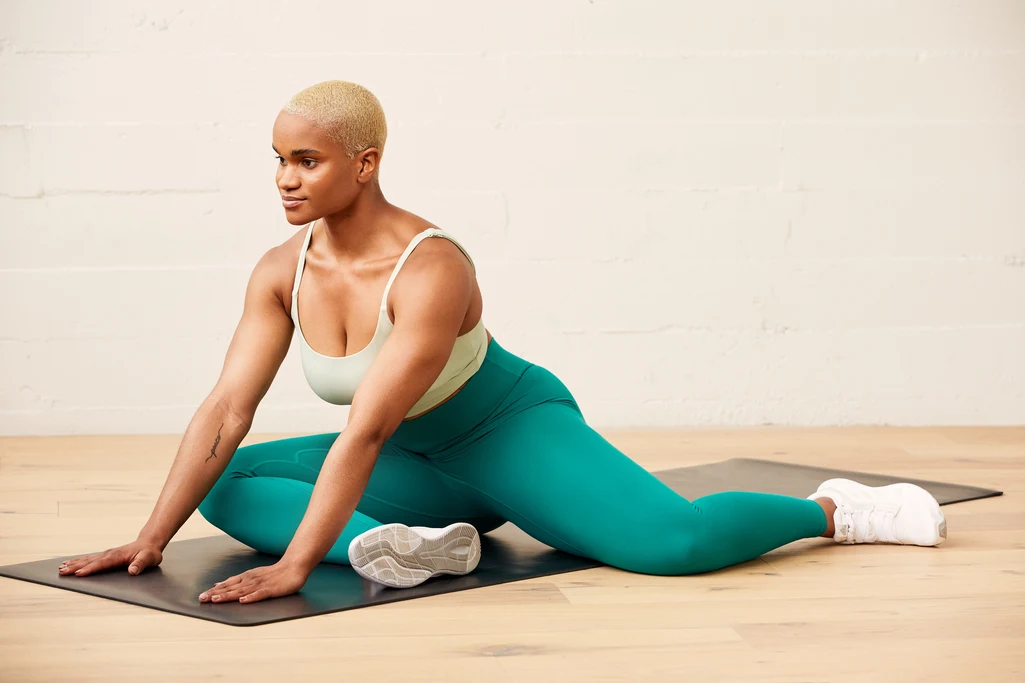How to Improve Flexibility and Mobility with Stretching
Flexibility and mobility are critical components of physical health, influencing performance, posture, and daily activities. Stretching is one of the most effective ways to enhance both. Incorporating the right techniques into your routine can prevent injuries, alleviate discomfort, and improve overall body mechanics. 
This article delves into key strategies and practical tips for enhancing flexibility and mobility through stretching.
Understanding the Fundamentals of Stretching
Stretching is more than just bending over to touch your toes; it’s a deliberate practice that targets muscles, tendons, and ligaments to improve their range of motion and elasticity. A foundational understanding of the types of stretching is essential to create an effective routine.
Types of Stretching
Static Stretching: This involves holding a stretch for an extended period, typically 15–60 seconds. It’s ideal for increasing flexibility and is most effective after workouts when muscles are warm.
Dynamic Stretching: Involves controlled, active movements that take joints and muscles through their full range of motion. It’s excellent as a warm-up to prepare the body for physical activity.
Ballistic Stretching: Rapid, bouncing movements push a muscle beyond its normal range. This method is less common due to its higher risk of injury but may be suitable for advanced athletes.
Proprioceptive Neuromuscular Facilitation (PNF): This advanced method involves stretching a muscle, contracting it, and then stretching it further. PNF is particularly effective for improving flexibility.
Understanding these techniques allows for more targeted and effective stretching routines, tailored to specific goals and fitness levels.
Benefits of Stretching for Flexibility and Mobility
Stretching goes beyond improving flexibility—it enhances mobility, reduces muscle tension, and supports overall physical health. These benefits collectively enhance athletic performance and daily activities.
Flexibility vs. Mobility
While flexibility refers to the ability of a muscle to lengthen, mobility encompasses the broader ability of joints to move freely within their range of motion. Both are interconnected yet distinct aspects of physical wellness.
Key Benefits:
- Enhanced Range of Motion: Regular stretching prevents stiffness and helps muscles and joints move effortlessly.
- Improved Posture: Stretching tight muscles, such as the hamstrings and hip flexors, can alleviate postural imbalances caused by prolonged sitting or repetitive movements.
- Reduced Risk of Injury: By improving muscle elasticity and joint mobility, stretching minimizes the likelihood of strains or sprains during physical activity.
- Better Blood Flow: Stretching promotes circulation, delivering oxygen and nutrients to muscles, which aids in recovery.
- Stress Relief: Gentle stretching stimulates the parasympathetic nervous system, reducing stress and promoting relaxation.
Building an Effective Stretching Routine
Creating a balanced stretching regimen requires intentionality and consistency. Tailor your routine to your specific needs and goals for optimal results.
Warm-Up Before Stretching
Stretching cold muscles can increase the risk of injury. Engage in light aerobic activities, such as jogging or jumping jacks, to elevate your heart rate and warm up your muscles before starting a stretching session.
Incorporate Full-Body Stretches
Address all major muscle groups in your routine to ensure balanced flexibility and mobility. Some essential stretches include:
- Hamstring Stretch: To release tension in the back of the thighs.
- Hip Flexor Stretch: To counteract tightness from prolonged sitting.
- Thoracic Spine Rotation: To enhance upper body mobility.
- Cat-Cow Pose: To improve spinal flexibility.
Pay Attention to Technique
- Avoid bouncing during static stretches to prevent overstretching or injury.
- Focus on proper alignment to target muscles effectively.
- Breathe deeply to help relax muscles and increase stretch intensity.
Frequency and Duration
Consistency is key. Aim for at least 10–15 minutes of stretching daily or incorporate it as a cool-down after workouts. Hold each stretch for 15–30 seconds and repeat 2–3 times for best results.
Enhancing Long-Term Flexibility and Mobility
Flexibility and mobility are not achieved overnight; they require a sustained and systematic approach. In addition to stretching, other practices can support your journey toward greater physical freedom.
Incorporate Yoga or Pilates
These practices emphasize controlled movements and sustained stretches, improving flexibility, core strength, and body awareness. Many poses, such as Downward Dog or Child’s Pose, naturally enhance flexibility and mobility.
Use Tools to Aid Stretching
- Foam rollers help release tight fascia and prepare muscles for stretching.
- Stretching straps or bands allow for deeper stretches in hard-to-reach areas.
- Yoga blocks provide support and assist in maintaining proper alignment during stretches.
Hydration and Nutrition
Muscle elasticity and joint health are influenced by hydration and diet. Staying hydrated keeps tissues pliable, while consuming a diet rich in collagen, omega-3 fatty acids, and antioxidants supports connective tissue health.
Rest and Recovery
Flexibility improves during rest periods. Ensure adequate sleep and allow time for muscles to recover between intense sessions of stretching or physical activity.
Conclusion
Stretching is a versatile and transformative practice that significantly impacts flexibility and mobility. By integrating different types of stretches, maintaining proper technique, and complementing your routine with supportive practices like yoga and foam rolling, you can achieve improved physical performance and overall well-being. Commit to a consistent stretching routine, and over time, you’ll experience the profound benefits of a more flexible and mobile body.
References
- Health Publishing. “The Importance of Stretching and Flexibility.”
- American Council on Exercise. “Stretching Techniques for Enhanced Mobility.”
- National Academy of Sports Medicine (NASM). “The Science of Stretching.”
- “Stretching: Focus on Flexibility.”
- Cleveland Clinic. “How to Improve Flexibility with Stretching.”
















































![[ℕ𝕖𝕧𝕖𝕣] 𝕊𝕖𝕝𝕝 𝕐𝕠𝕦𝕣 𝔹𝕚𝕥𝕔𝕠𝕚𝕟 - I Think I Have Crypto PTSD](https://cdn.bulbapp.io/frontend/images/819e7cdb-b6d8-4508-8a8d-7f1106719ecd/1)




